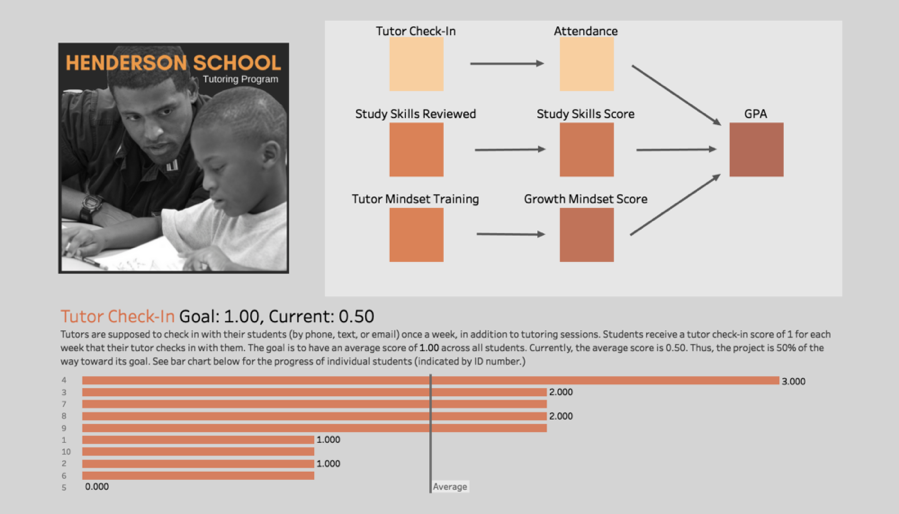Hello! I am Amelia Kohm, founder of Data Viz for Nonprofits, a consulting firm that helps organizations to better use and show their data through charts, maps, and graphs. My work is all about making data accessible and reducing the journey from data to action. And one way to do that is with a living logic model.
Wherever I turn in the evaluation world, I find logic models. Also called a causal chain, roadmap, theory of change, and some other names too, a logic model is just a humble flow chart with an erudite name. It tells a story about how one thing leads to another and is a great way to plan for solving a problem. But logic models are hypothetical, best case scenarios. And, well, reality can bite.
Another problem with logic models is that they often get more play during the planning and proposal-writing phase of a project than during implementation. During the daily work of a project, logic models are taking it easy, gathering dust in files and on servers.
But what if we could plug a logic model into the real world? What if we could see how our plan is playing out in reality and make adjustments along the way?
I give you the next generation logic model, the living logic model.
The current that animates living logic models is real-time data. A living logic model compares theory to reality by showing progress to date. Color saturation indicates the status of each component. And the user can click on any component to see what subgroups might be driving progress, stagnation, or regression.
A living logic model is more understandable and tangible than a traditional one. The user can scroll over any component in the model to learn more about it. Such descriptions can include photos and web links for interested users.
Rad Resource:
Play around with this living logic model for a tutoring program to get an idea of its potential for your organization or your clients.
Hot Tip:
You can create a living logic by importing data to free software like Tableau Public. It can then be embedded into your website to make it accessible to all stakeholders.
The American Evaluation Association is celebrating Chicagoland Evaluation Association (CEA) Affiliate Week. The contributions all this week to aea365 come from CEA members. Do you have questions, concerns, kudos, or content to extend this aea365 contribution? Please add them in the comments section for this post on the aea365 webpage so that we may enrich our community of practice. Would you like to submit an aea365 Tip? Please send a note of interest to aea365@eval.org. aea365 is sponsored by the American Evaluation Association and provides a Tip-a-Day by and for evaluators.


This is a great idea, Amelia. We use logic models and constantly refining them to work with various teams. Would love to integrate this idea.
Hello Amelia,
Thank you for your article on the Living Logic Model.
I am currently studying Evaluation and I have seen flawed logic models in some case studies. This may be due to incorrect assumptions or an error in understanding. In a traditional model this may not be apparent until a formal evaluation is performed – possibly too late for some programs.
While logic models are a description of how a program should work, they don’t always reflect how how it is working. This highlights the need for some mechanism to update the logic model to reflect the changing nature of programs.
Your model provides a neat solution. It is reminiscent of a continuous improvement approach where results are continuously fed back to form the basis of the next improvement cycle.
Your description of the living logic model as “tangible” is apt – it really does feel that way! Traditional logic models often seem out of date shortly after their creation.
I like your suggestion to make the logic model truly interactive by adding it to a website and updating the data in real time. This way, it can be viewed as a performance metric rather than a static document.
Finally, thanks for recommending Tableau Public software . This is a great tool to move the logic model away from a traditional statement of program theory and into a much more useful tracking tool.
Regards,
Andrew Greenhalgh
Ameila,
This is the next best thing for me since learning to use process maps!! Having results of the logic model at your fingertips is awesome. Thank you.
Amelia. This is really cool. Thank you for sharing.
You are welcome. Glad it was helpful, Matt!